You’re on a road trip and have two paths ahead, each with a sign in a language you don’t understand.
One path is smooth and wide, seemingly easy to follow. The other is narrow, bumpy, and maybe a little harder, but the path looks well-worn.
Knowing which path is right could be impossible without a map, phone, or help.
When it comes to choosing Python vs. Java, it feels a lot like this — And your choice can make a big difference in how your career trajectory changes over the next few years.
With its almost conversational syntax, Python is like a smooth, wide road. It’s designed to be easy to learn and use. Java, on the other hand, resembles the rougher path. It may be more challenging at first, but it’s solid and reliable.
This guide will help you make an informed decision. Think of it as your map for this coding journey.
We’ll closely examine Python vs. Java, seeing what makes each valuable and how they can help you differently.
Python might be easier to start with, but Java offers different opportunities. By the end, you’ll have a clearer idea of which path suits you.
Let’s dive in!
What Is Python?
Guido van Rossum first created Python on February 20, 1991. Developers liked how easy it was to read and use.
The name, a nod to the Monty Python group, brings some fun to coding. Python’s style was clear and different from the languages of the time.
Python is an interpreted language that organizes code using indents (or spaces) instead of brackets and semicolons, making it look cleaner and easier to understand.
Here’s an example of what Python code looks like:
def greet(name):
print(f"Hello, {name}!")
greet("Guido")The above snippet will output:
Hello, Guido!Python uses simple language to get things done, almost like reading plain English. Although it’s easy to read, you should not underestimate its capabilities.
Additionally, Python comes with many tools and extras. People use it to build websites with frameworks like Django and Flask, analyze data, and work with machine learning using NumPy and scikit-learn.
Python is known for doing many things well in the programming world.
Let’s look at some of the main advantages of Python:
- Clear and readable syntax: Makes learning and focusing on problem-solving easy for new programmers.
- Object-oriented language: Models real-world entities with classes and objects for reusable and modular code.
- It’s an interpreted language: Executes code line by line for quick testing and debugging. You don’t have to wait to compile code to check if there are errors.
- Adjust memory usage during runtime: For better performance and efficiency.
- Perform type checking at runtime: Without needing to declare variable types explicitly.
- Allows you to create graphical interfaces: Using Tkinter, PyQt, and Kivy.
- Manages memory automatically: Preventing leaks and optimizing performance.
- Offers extensive built-in modules and functions: So you don’t need to import libraries and packages for everything.
- Provides more than 500,000+ third-party packages via PyPi: To extend Python’s capabilities for diverse projects.
However, Python has some disadvantages you need to be wary of:
- Runs slower: As compared to compiled languages like Java.
- Low versatility: You rarely see Python used for mobile app development.
- Higher memory consumption: Python’s ease of use and flexibility can lead to higher memory consumption than lower-level languages.
What Is Java?
Java is a compiled language created in 1995, thanks to Sun Microsystems.
Its creator, James Gosling, wanted a language free from limits — one you could use anywhere, with speed and power. This idea of “write once, run anywhere” clicked with businesses, and Java became their go-to language.
Java’s code might seem longer than Python’s, but that’s by design.
Curly brackets mark off each code section, and every variable must have an explicit type. This attention to detail makes the code reliable for big, complex projects.
Here’s a little Java hello world:
public class Greeting {
public static void main(String[] args) {
greet("Guido");
}
public static void greet(String name) {
System.out.println("Hello, " + name + "!");
}
}This will output:
Hello, Guido!What makes Java shine is its vast set of tools.
We’re talking frameworks and libraries: everything you need to build almost anything.
Need a business app? Use Spring Framework.
How about a phone app? Android Studio has you covered.
Java adjusts, always having the right tool, making it perfect for highly complex applications.
The average salary for Java developers in New York ranges between $102,000 and $136,000, making it a better-paid profession than Python at present.
Let’s look at some of the advantages of Java:
- Strong foundation in object-oriented programming: Thanks to Java’s strong foundation in object-oriented programming, similar to Python, it helps you build modular and reusable applications.
- Write code once and run it anywhere: With Java Virtual Machine (JVM) support, you can write code once and run it anywhere, enhancing portability.
- The go-to language for Android app development: Java has been the go-to language for Android app development for a long time now.
- Helps catch errors early: Since Java requires simultaneously declaring variables with specific data types, you can catch errors sooner rather than later.
- Wide range of libraries: Because of the language’s maturity, you benefit from a wide range of libraries, frameworks, and tools, especially in enterprise and Android development.
- Better performance: Java performs much better than interpreted languages like Python due to its compiled nature.
- Robust language: The language’s robustness allows many enterprises to use it to build large-scale applications where reliability is necessary.
Here are some disadvantages of Java:
- Verbose syntax: Java’s dense syntax slows developer productivity, requiring more code than Python.
- Consume more memory: Java applications consume more memory, making them less efficient than C or C++.
- Slowed-down development process: The compilation step slows the development process, reducing agility compared to interpreted languages.
- Steep learning curve: Because of Java’s extensive features and ecosystem, as well as a more complicated syntax, beginners face a steep learning curve.
What Is The Difference Between Java And Python?
| Aspect | Python | Java |
| Syntax | Clean and concise | Verbose but structured |
| Learning Curve | Gentle | Steeper |
| Performance | Slower | Faster |
| Typing | Dynamic | Static |
| Ecosystem | Extensive, especially for data science and web dev | Massive, mature, and enterprise-focused |
| Community | Welcoming and beginner-friendly | Large and established |
Now, let’s compare these two coding titans a little more in-depth.
Each language has its unique strengths, and choosing the correct one often depends on the task at hand.
Popularity: Growing Vs. Slowing
Check out this graph from Google Trends below: the blue line is Python and the purple line is Java.
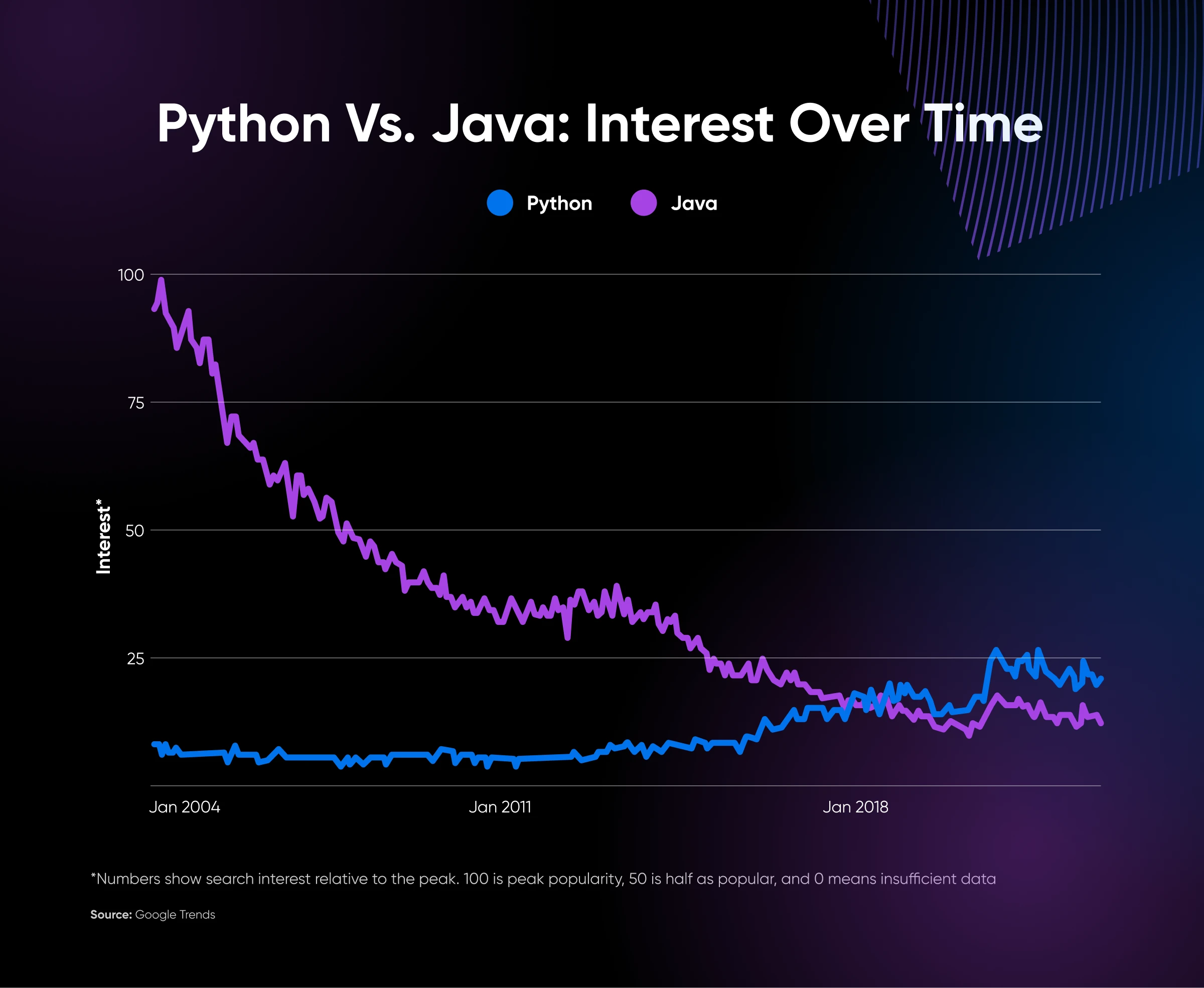
It’s clear that while Java dominated developer communities for decades, it’s now slowed down, and Python has already become popular.
Python is currently the third most popular programming language after JavaScript and HTML. According to the StackOverflow survey, 49.28% of developers use it.
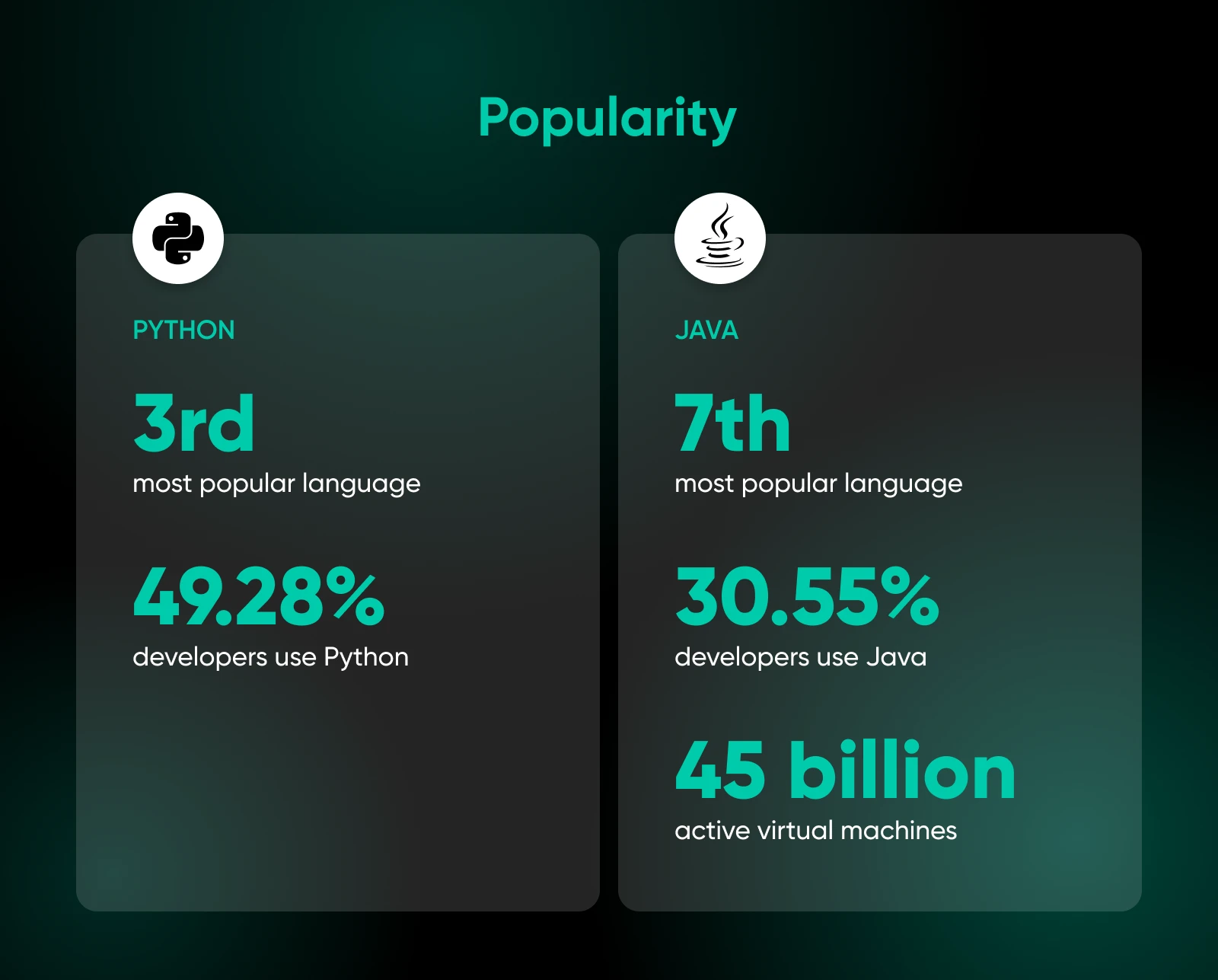
While enterprises may still use Java for many existing systems, people are gradually moving towards newer, more maintainable languages.
So, should we cut the debate and declare Python as the winner? Hold on now. Not so fast.
After decades of use and development, Java remains a vital language that’s still relevant in the industry.
About 30.55% of developers use Java, and it’s prevalent in big companies. Java is the backbone of countless enterprises.
It is also one of the top ten most popular languages, and veteran programmers love Java for its robustness.
Syntax: Simplicity Vs. Structure
Syntax is the rules that dictate how you write code the computer can understand. Think of it like a programming language’s grammar.
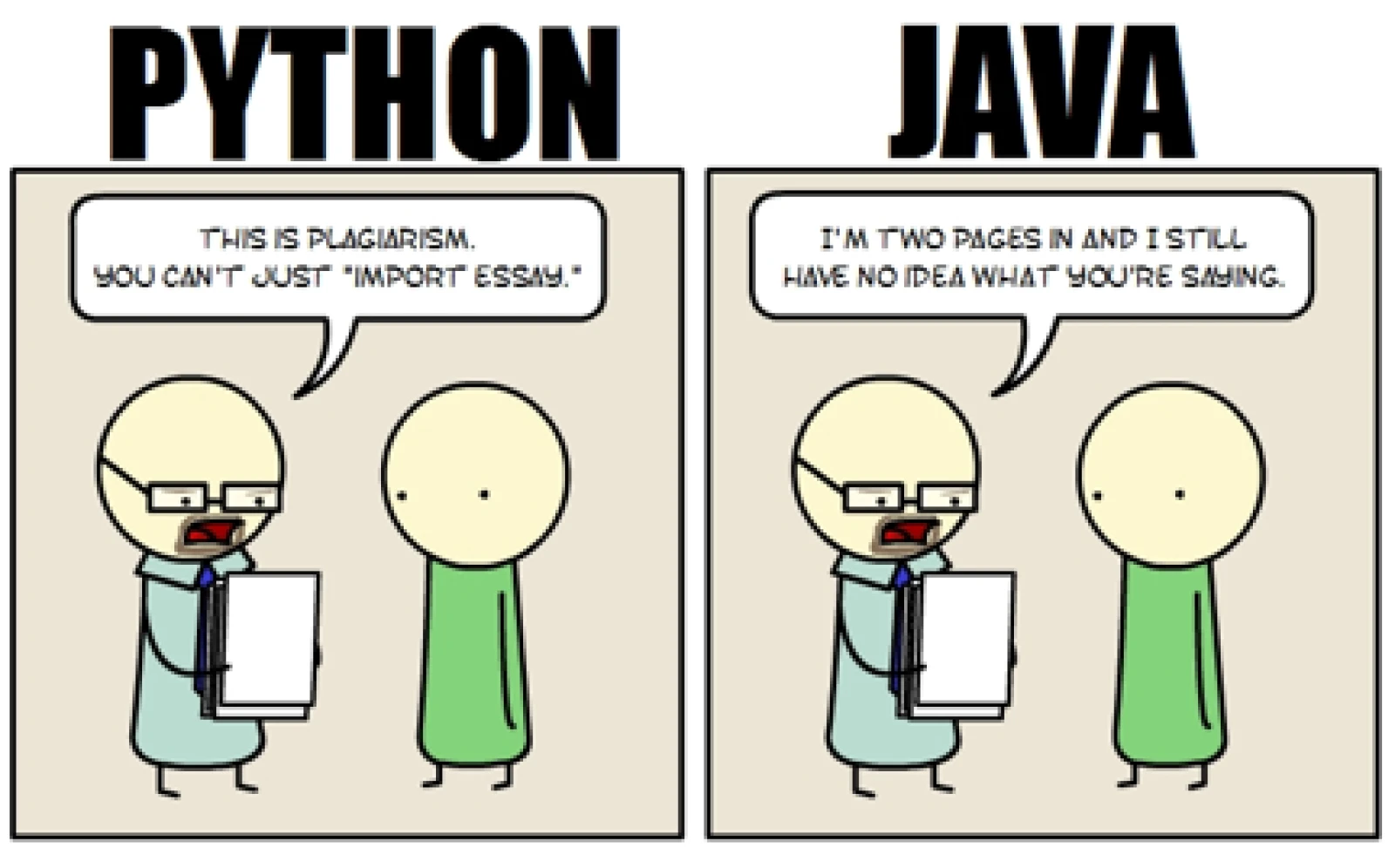
Python keeps things beautifully simple and readable. You use indentation to guide the flow of code blocks, enhancing code readability, and the minimal use of keywords and punctuation makes it incredibly welcoming, even for beginners.
Python is like writing a clear set of instructions.
Let’s say you want to sum up two numbers. In Python, you might write:
def sum_numbers(a, b):
return a + b
print(sum_numbers(1,5)Java takes a different path, opting for a more complex and detailed syntax. Curly braces define code blocks, and semicolons mark the end of each statement. Think of them as the punctuation marks that give Java its structure.
Java is more like writing a formal letter. There are stricter rules and more punctuation.
Here’s what the same function will look like in Java:
public class Main {
// Function to sum two numbers
public static int sumNumbers(int a, int b) {
return a + b;
}
// Main method to test the function
public static void main(String[] args) {
int result = sumNumbers(1, 5);
System.out.println(result); // Output: 6
}
}While this can feel more demanding at first, it provides a level of organization that can be a lifesaver for larger, more intricate projects.
Learning Curve: Gentle Vs. Steep
Python is easier to learn due to its straightforward syntax, which resembles plain English. If you want to learn Python as a beginner, it is approachable because of the wealth of resources and a supportive community. Python prioritizes readability, allowing learners to grasp core programming concepts without getting tangled in complex syntax.
On the other hand, Java presents more of a challenge for beginners. Its robust structure and statically typed system demand more initial effort.
However, this structure shines in managing more extensive and intricate projects. Java’s strictness helps promote well-organized, more maintainable code, which is important for large-scale software development.
While learning Java may initially feel overwhelming, the discipline it enforces pays off big-time as you gain experience.
Performance: Interpretation Vs. Compilation
Imagine the difference in speed between chopping vegetables while cooking versus prepping everything before you begin cooking.
What’s the quickest and most efficient way to cook?
Python is the chef who prepares the ingredients while cooking.
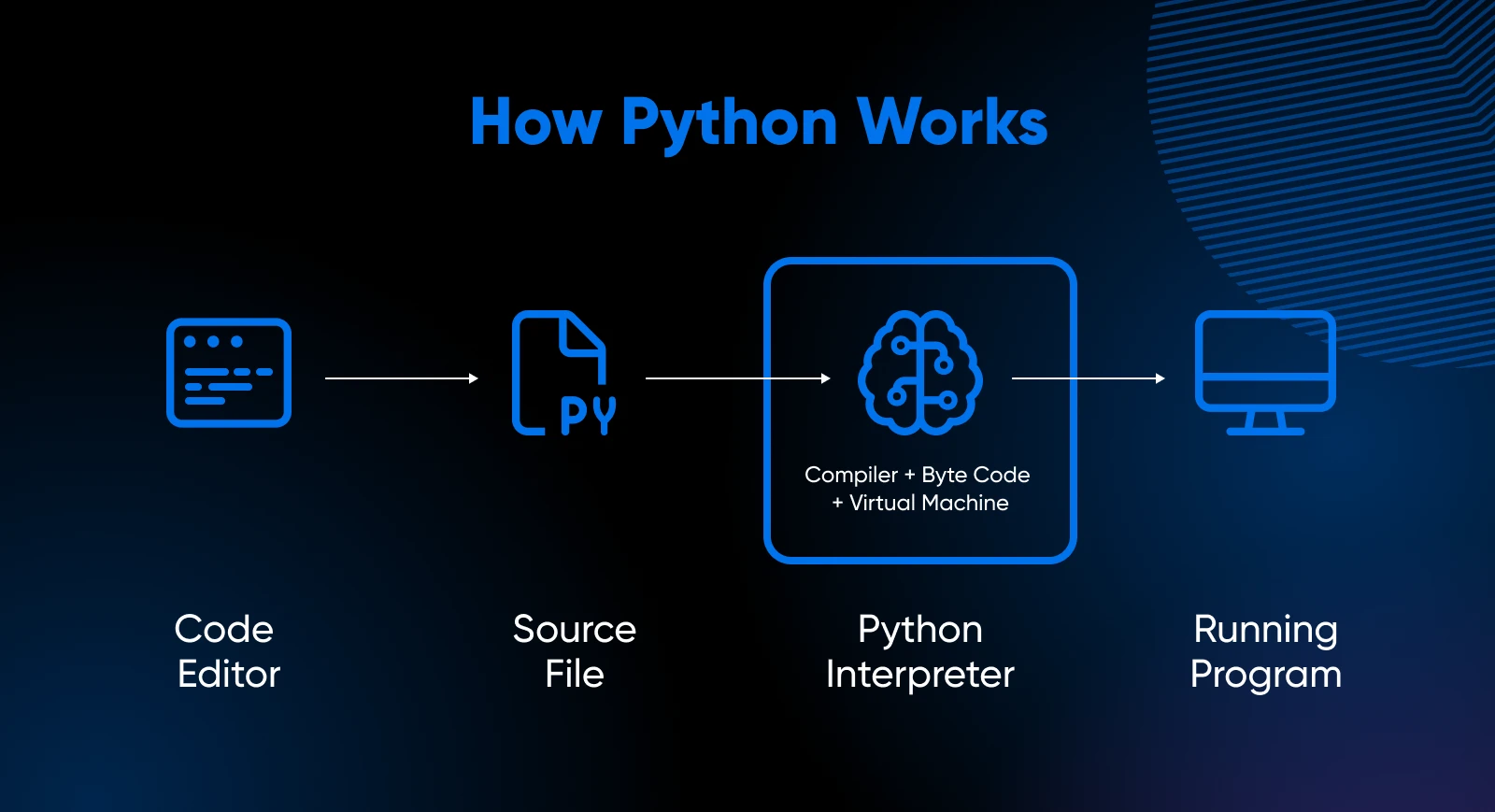
This “interpreted” approach is flexible — you can easily adjust elements on the fly. However, it’s generally slower since each step requires immediate interpretation and is interpreted repeatedly each time Python goes over it.
Java is the chef who prepares the ingredients before cooking.
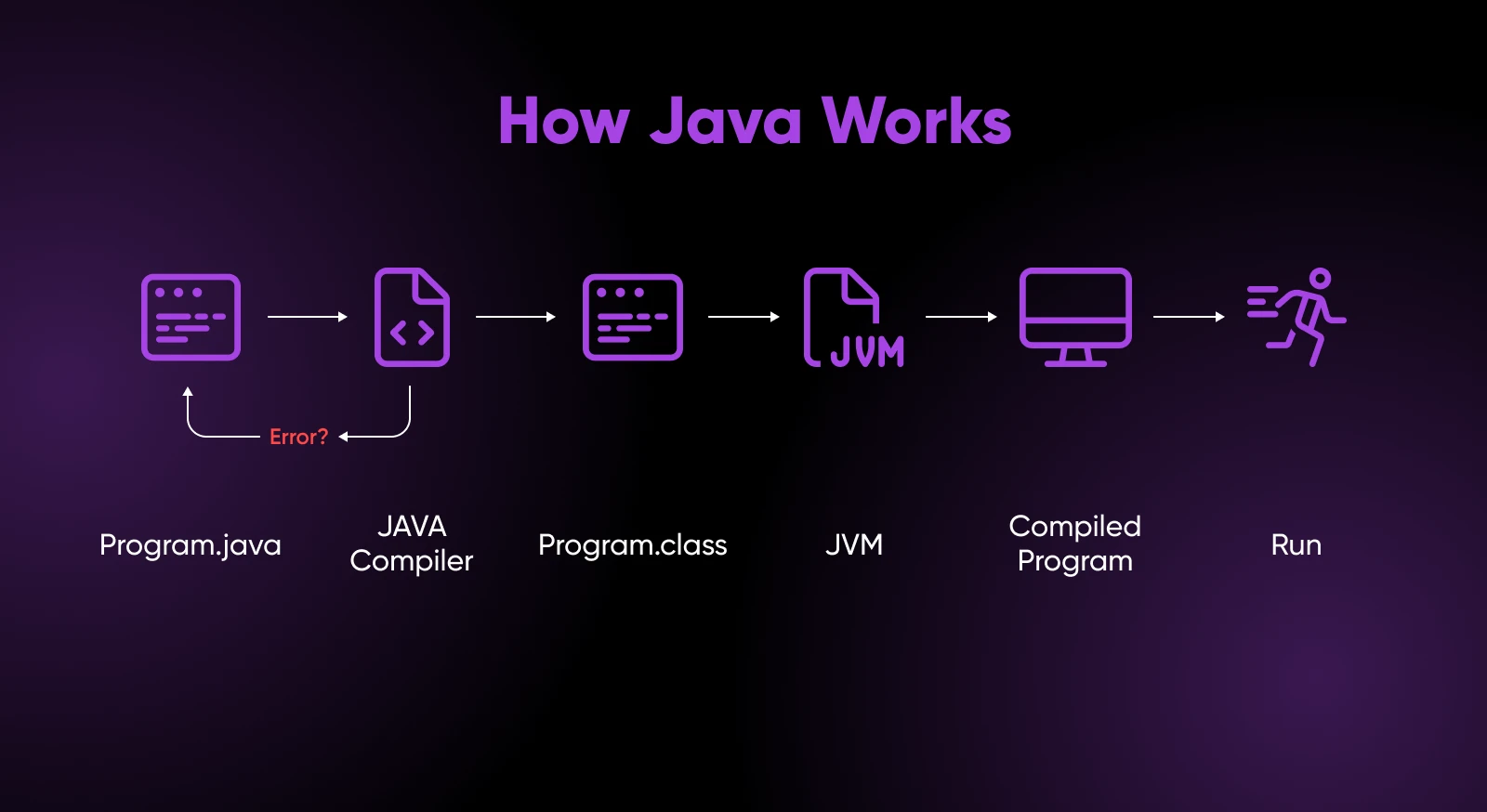
This “compiled” approach translates the entire code into machine code before execution. Compiling takes quite a lot of time as your codebase grows. You need to fix and recompile the code if there’s an error.
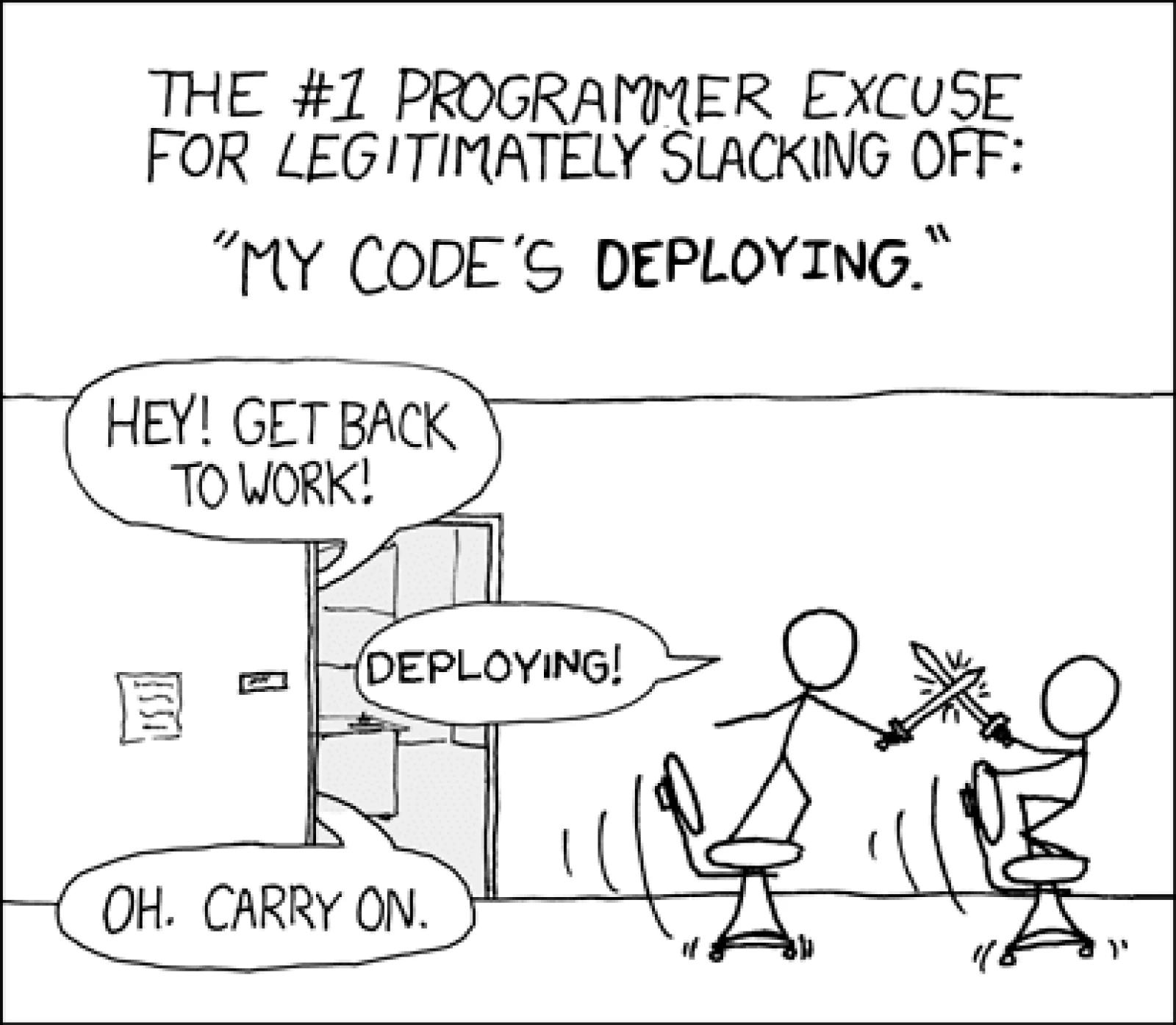
However, once the compilation part is complete and the code is read, the execution is very fast, leading to snappy applications.
To put this in perspective, let’s write a loop that runs 100,000 times and does nothing to compare Python vs. Java. In the end, it outputs the time taken to complete the process.
Here’s for Python:
import time
start_time = time.perf_counter_ns()
for i in range(100000):
# Empty loop
pass
end_time = time.perf_counter_ns()
duration = end_time - start_time
print(f"Python loop execution time: {duration} nanoseconds")This will output the following:
Python loop execution time: 2564880 nanosecondsHere’s the loop in Java:
public class LoopBenchmark {
public static void main(String[] args) {
long startTime = System.nanoTime();
for (int i = 0; i < 100000; i++) {
// Empty loop
}
long endTime = System.nanoTime();
long duration = (endTime - startTime);
System.out.println("Java loop execution time: " + duration + " nanoseconds");
}
}This will output the following:
Java loop execution time: 1334050 nanosecondsYou’ll notice that Java takes half the time to execute the same loop as Python.
The loops run 100,000 times. However, the Java program completes tasks much faster due to its code’s precompilation.
I ran both code snippets on a server, but if you run them locally, you’ll notice that Java takes even less time since it can fully use the available resources compared to Python.
Typing: Dynamic Vs. Static
Typing refers to how a language handles data types: the kind of values a variable can hold, like integers, strings, or more complex structures.
Think of “typing” in programming languages like labeling containers before you put things in them.
Python and Java take fundamentally different approaches to data typing, directly impacting how you write and debug code.
Python embraces flexibility. With Python, you don’t need to specify a variable’s type during declaration. This dynamic typing makes Python code concise and flexible. However, it can lead to runtime errors if a programmer is not careful.
For example:
x = 10 # x is an integer
x = "ten" # now x is a stringJava prioritizes robustness. Each variable needs an explicit type declaration checked at compile time.
The same example in Java illustrates this:
int x = 10; // x is an integer
x = "ten"; // this will cause a compile-time errorThis makes Java code more verbose and increases robustness and maintainability.
Note: You can type hints in Python, but it doesn’t enforce typing. Java enforces data typing, which reduces the possibility of errors and standardizes things.
Ecosystem: Data Science Vs. Enterprise
Python and Java give developers many powerful tools. But each language shines in different ways.
With its strong libraries like NumPy, Pandas, and scikit-learn, Python is a favorite among data scientists and machine learning engineers. These libraries help them quickly work with and understand data. Frameworks like Django and Flask make Python even better. They provide the foundational parts needed to build websites efficiently.
Java is known for creating significant, company-wide software. Frameworks like Spring and Hibernate are essential in this area. They give developers the means to build solid and dependable applications. There is more to Java than just company software. It’s also a leader in mobile app development. The Android SDK allows you to build robust Android apps effectively.
Community: Beginner-Friendly Vs. Established And Experienced
Though there are many resources on the web, you need a community around your chosen programming language to make.
Python’s community welcomes beginners warmly, offering countless resources, tutorials, and forums to help newcomers. Many open-source projects thrive here, with popular libraries driven by community contributions and the members contributing to grow the available libraries.
Due to its maturity, Java’s community is less beginner-friendly. However, it boasts a large and well-established network. For over two decades, Java has dominated the programming arena, and that’s reflected in its vast community. Conferences, user groups, and online resources are abundantly available to Java developers, supported by significant investments from global enterprise organizations.
Choosing A Language
Your chosen language generally depends on your goals, background, and projects.
For beginners, Python is an excellent starting point. Its gentle learning curve and supportive community make it ideal for those new to programming. Python suits data science, machine learning, and web development.
Java stands out for enterprise software or Android app development. Its robustness and performance make it perfect for large-scale applications, and the Android SDK is essential for creating Android apps.
Both Python and Java are powerful and versatile, each with solid communities and extensive libraries. The best approach is to try both and see which resonates most with you.
Java Vs. Python: Which Language Would You Choose?
The Python vs. Java debate doesn’t need you to choose a winner. Each language has exceptional tools. Pick a language that fascinates you, and let the excitement of coding help you learn it.
Explore Python’s various packages or use Java’s power to create enterprise solutions.
Remember, both languages require you to continue learning, building, and staying curious. After all, the software industry is driven by passion and innovation.
And if you want a dependable platform to experiment with Python libraries or host projects, consider DreamHost’s Managed VPS. It gives you the flexibility and power you need for coding on a server. Use it to experiment with data science libraries like Pandas and NumPy, develop web applications with Django or Flask, or simply host your projects.
Our user-friendly interface and supportive team will keep you focused on what you do best — coding, building, and being creative.
In the end, the winning language is the one that helps you turn your ideas into reality.

When You Expect Performance Get DreamHost VPS
Big or small, website or application – we have a VPS configuration for you.
See More
